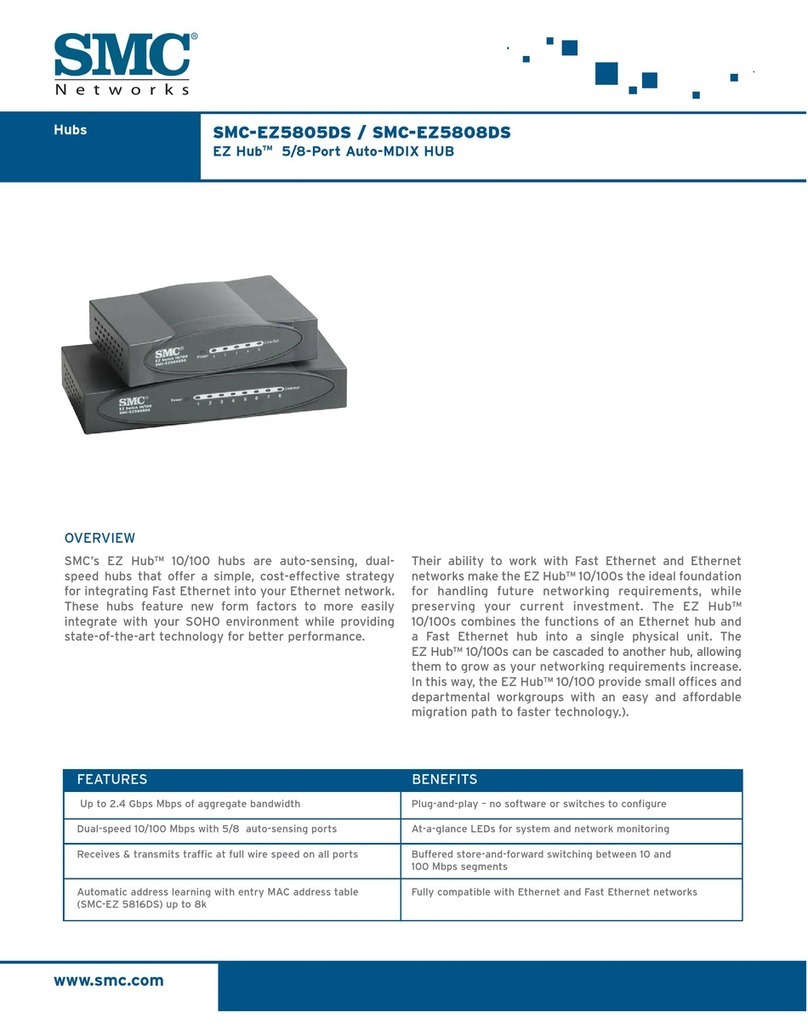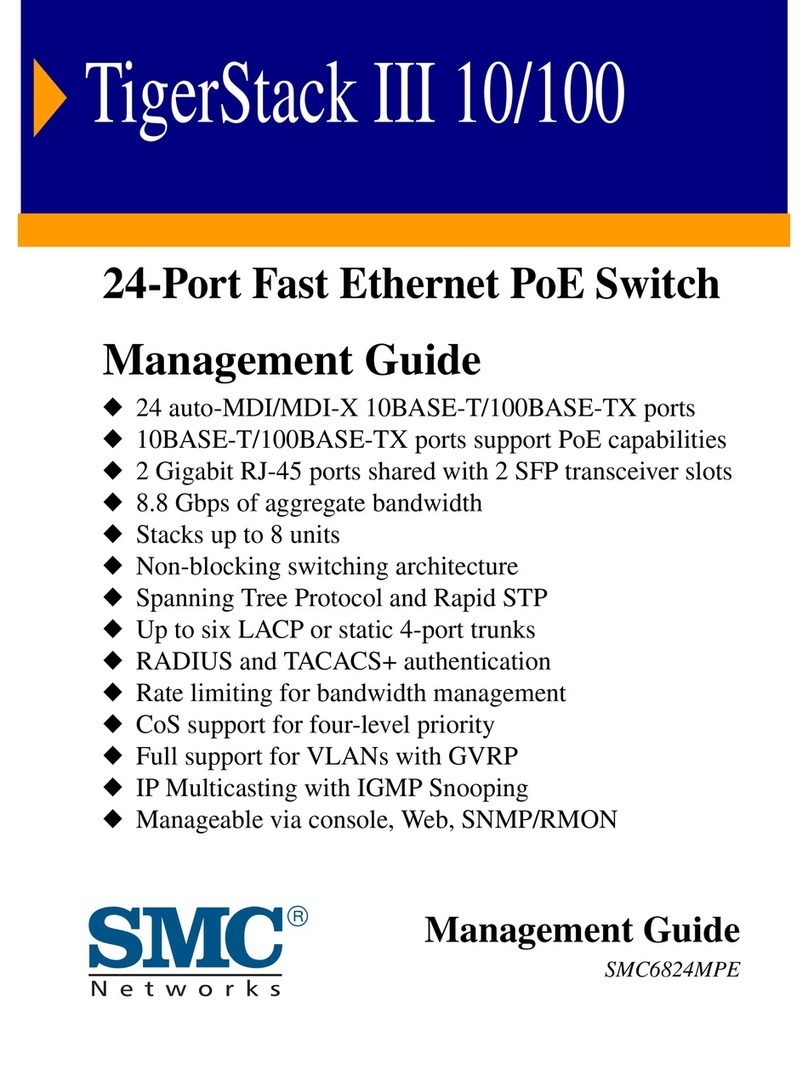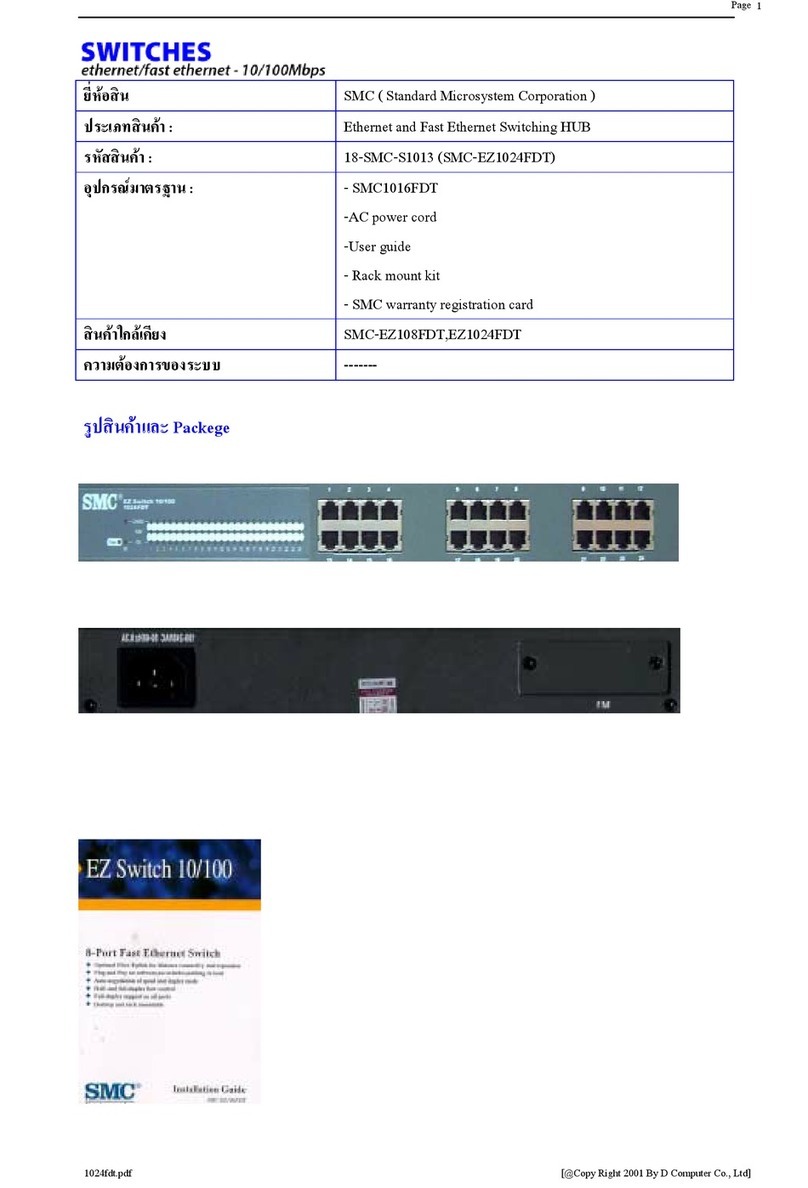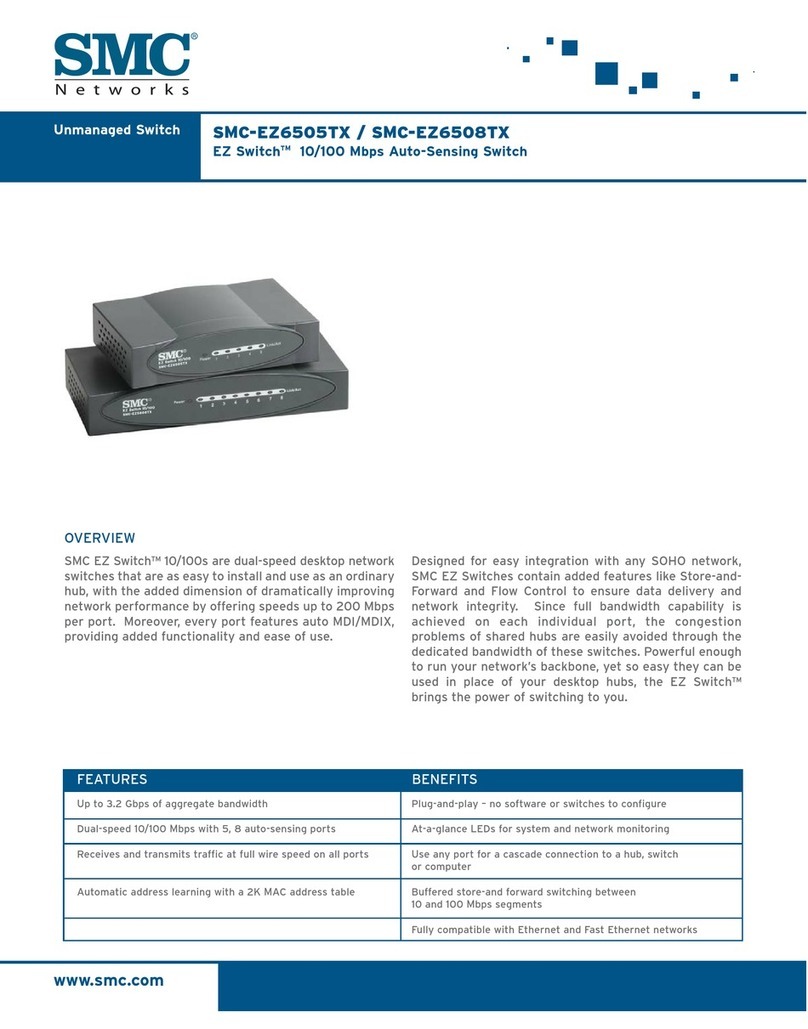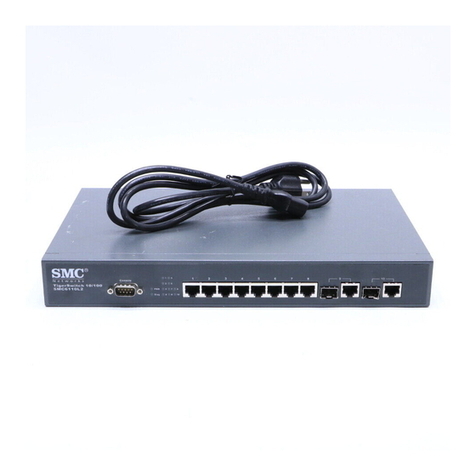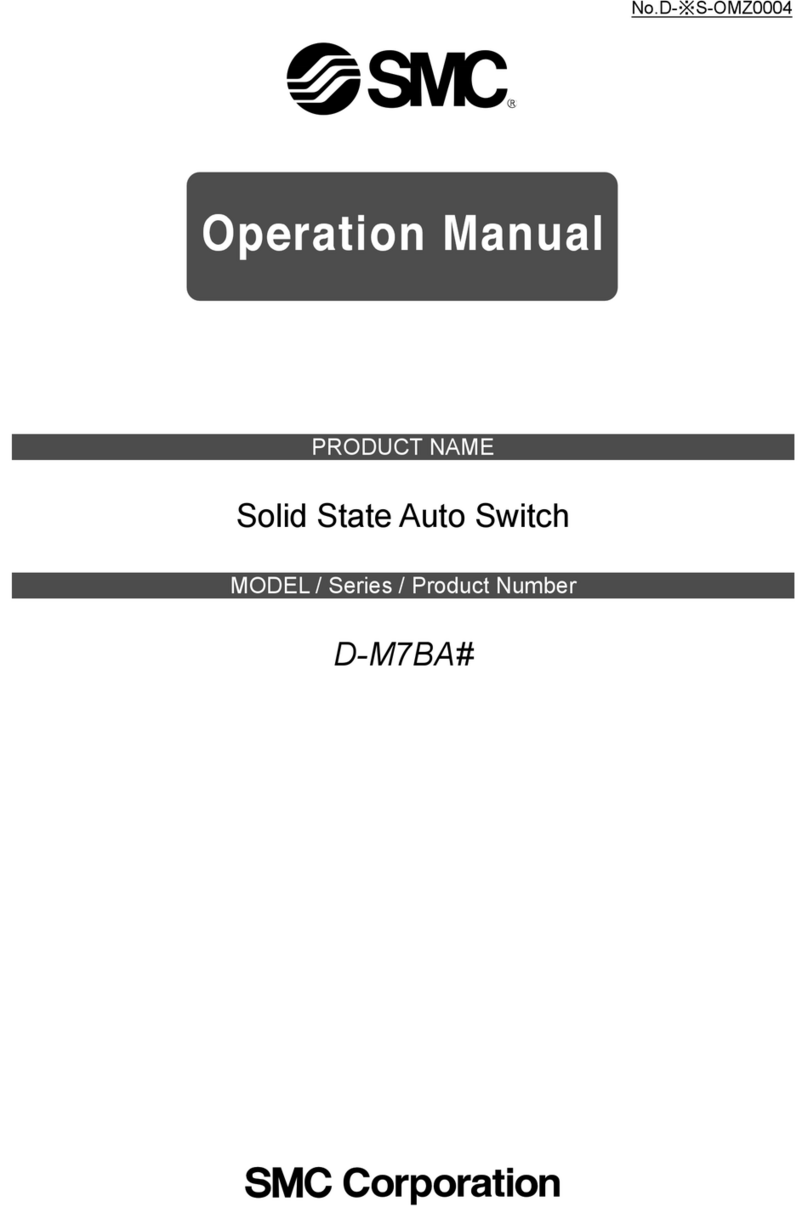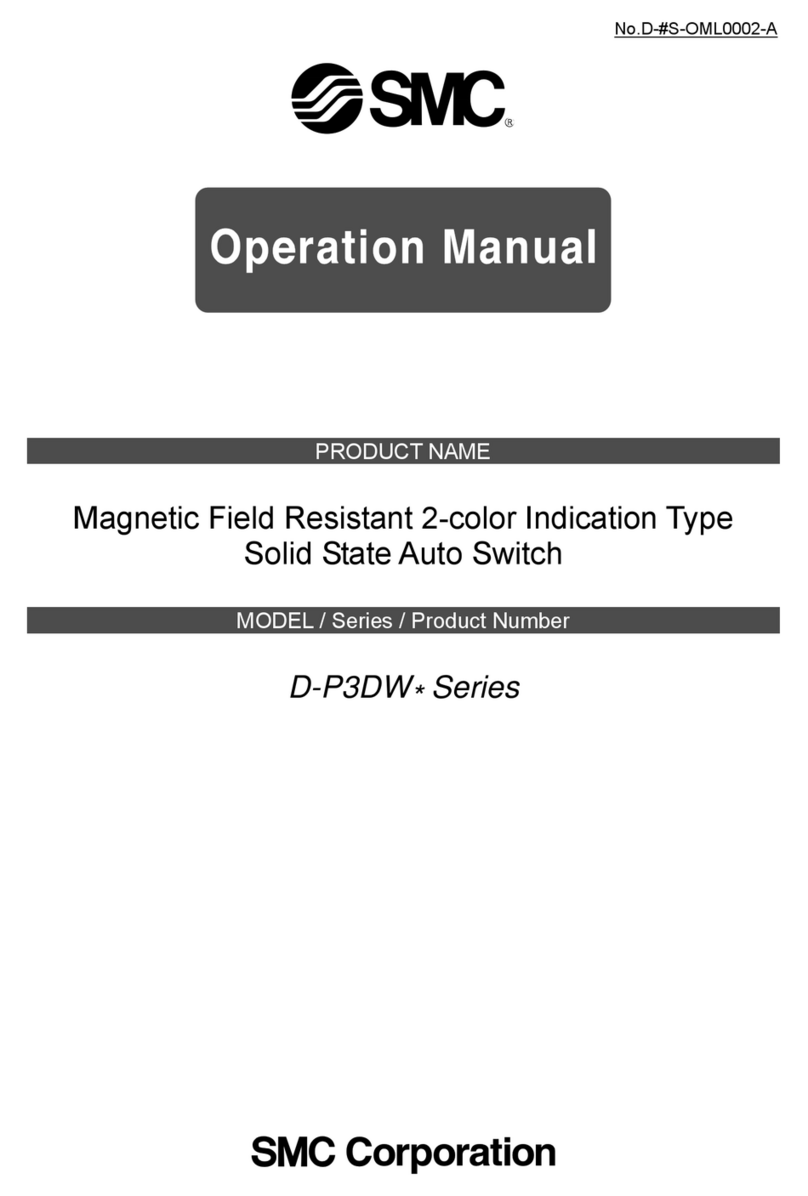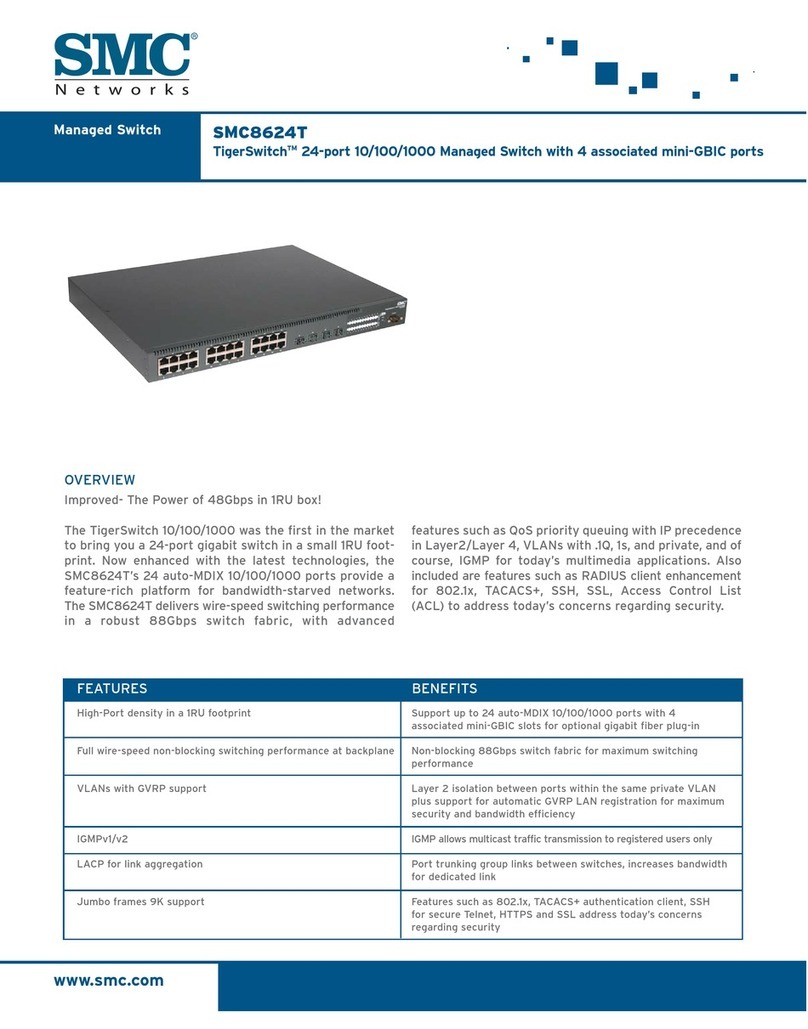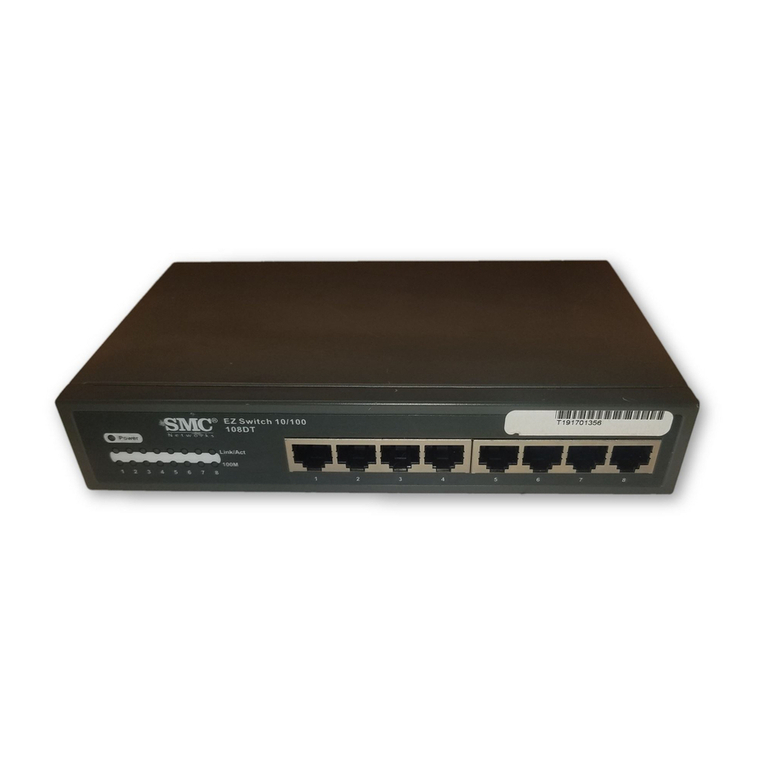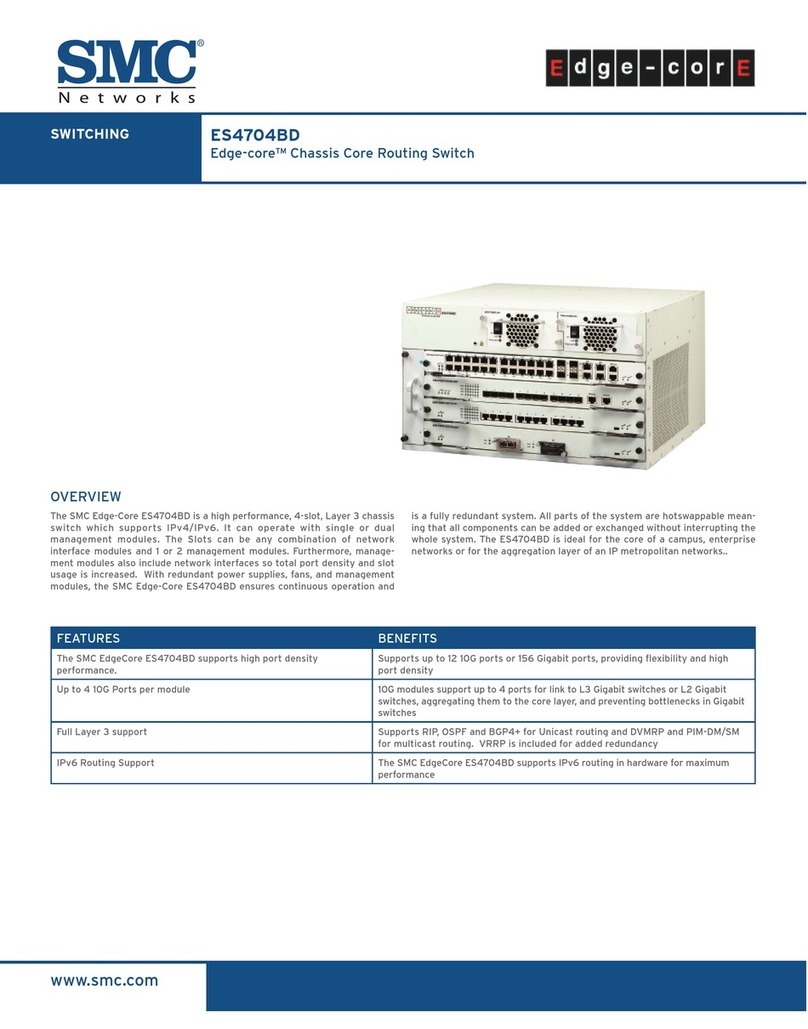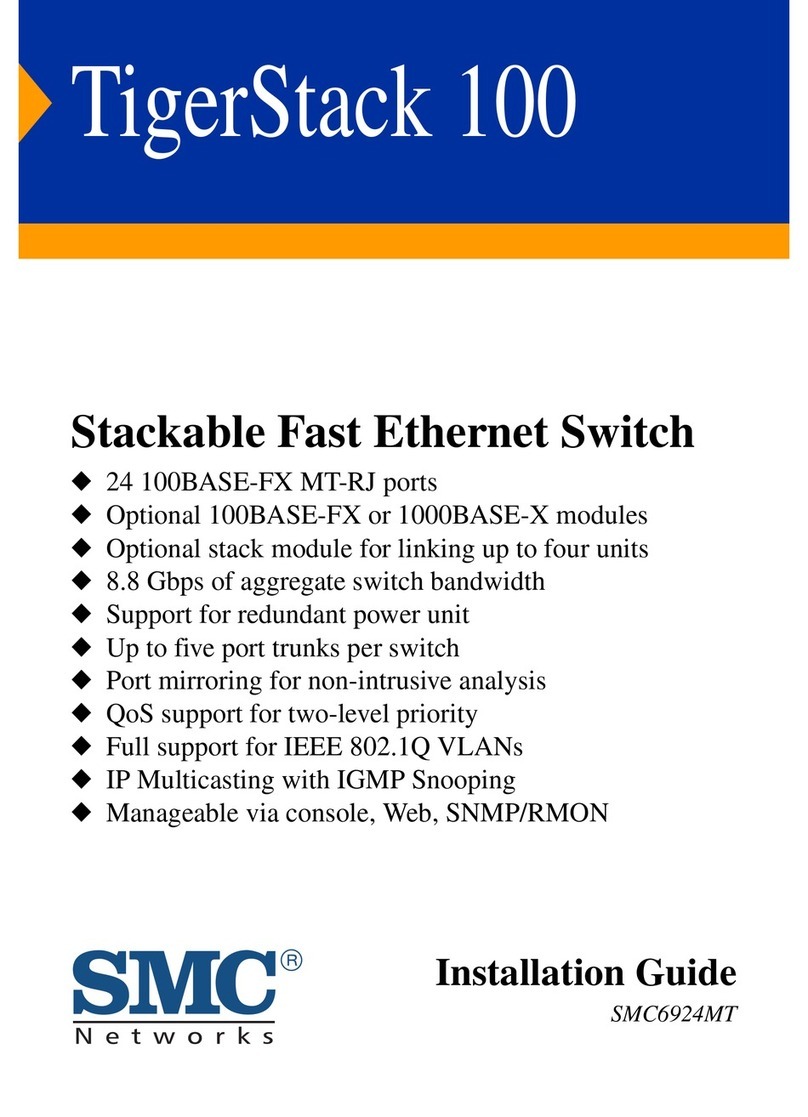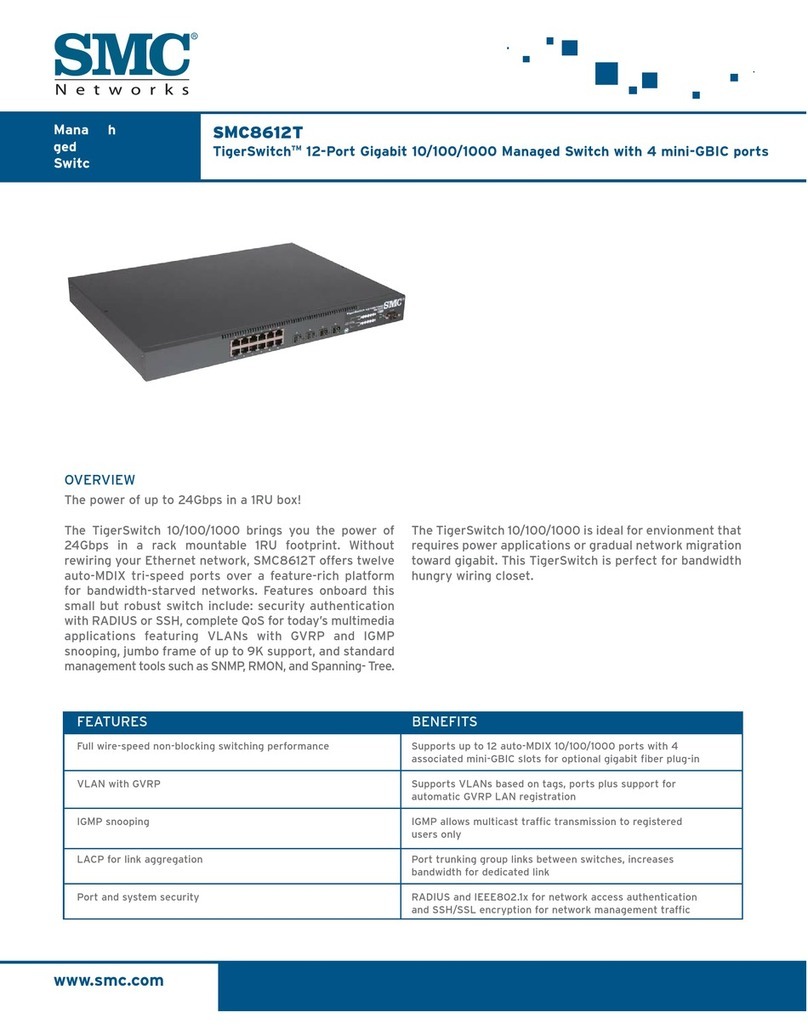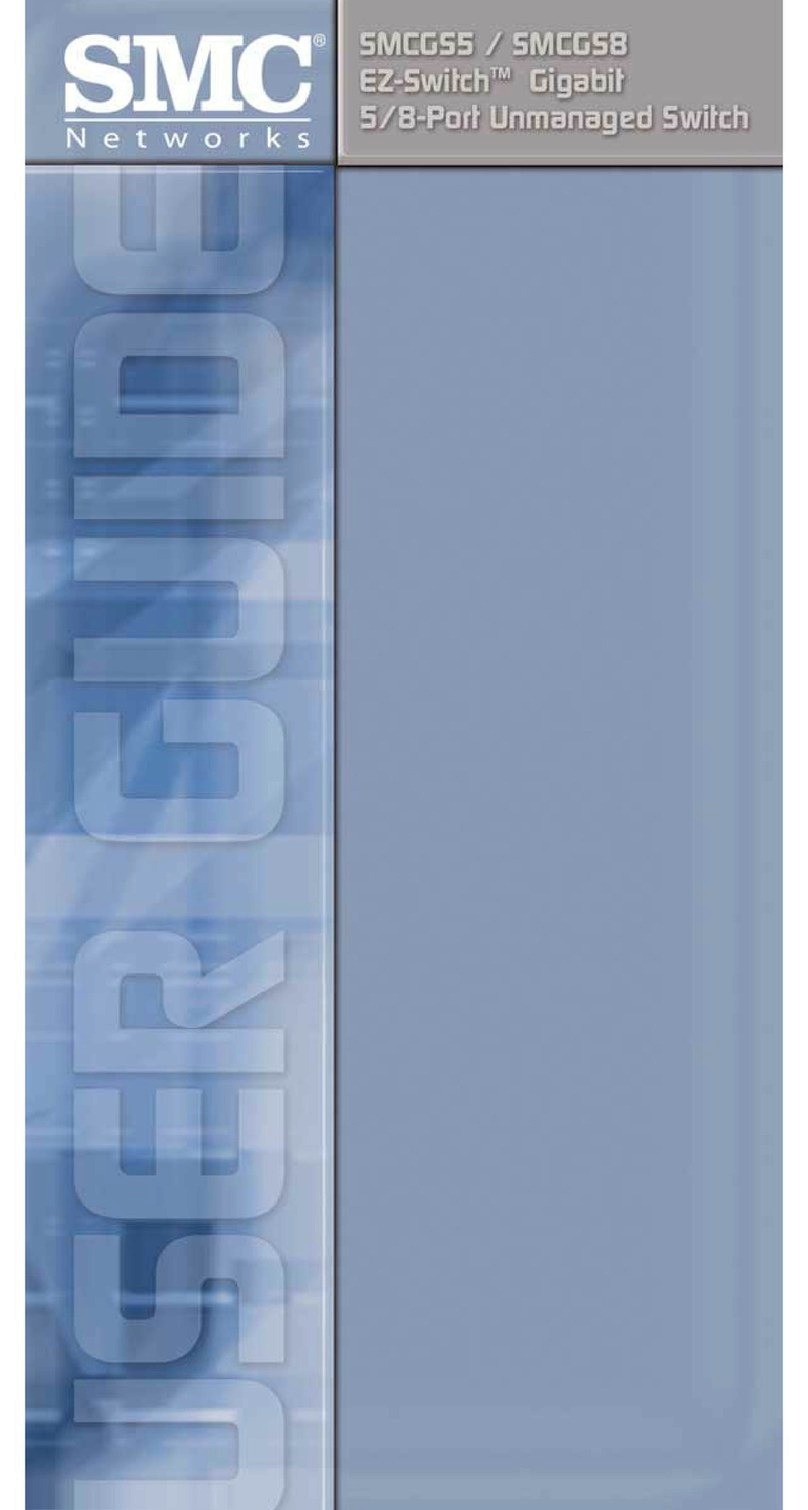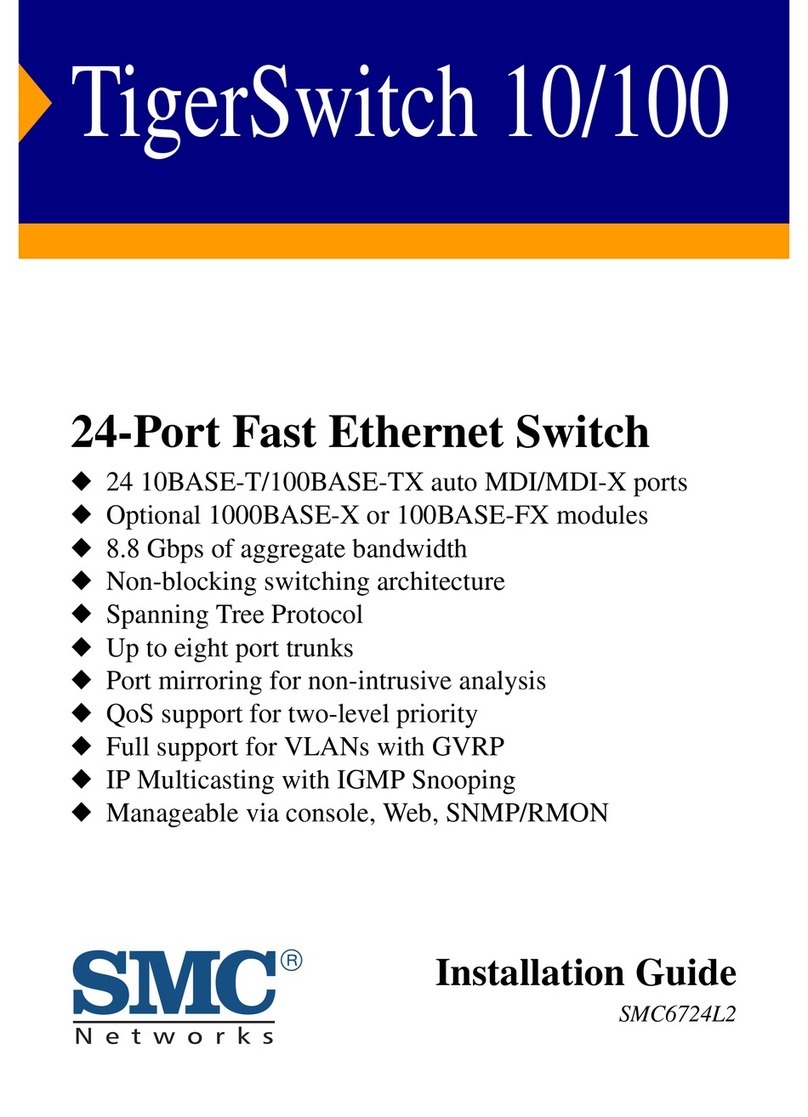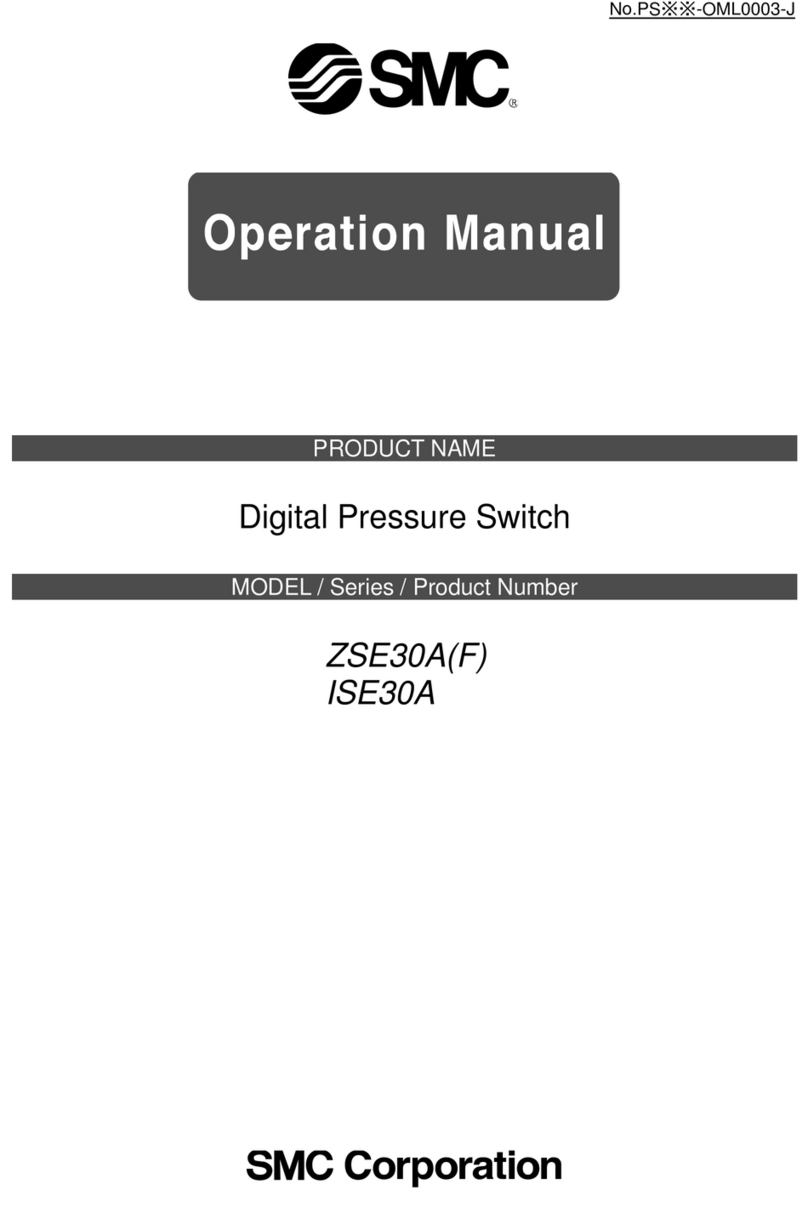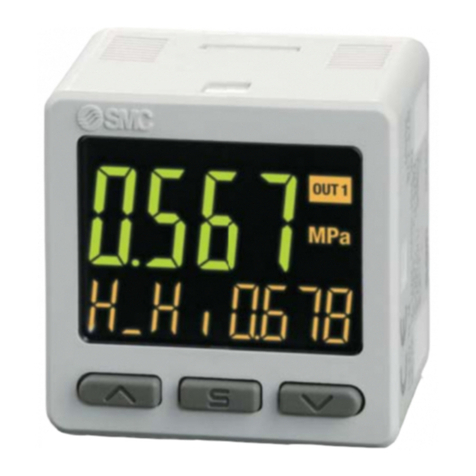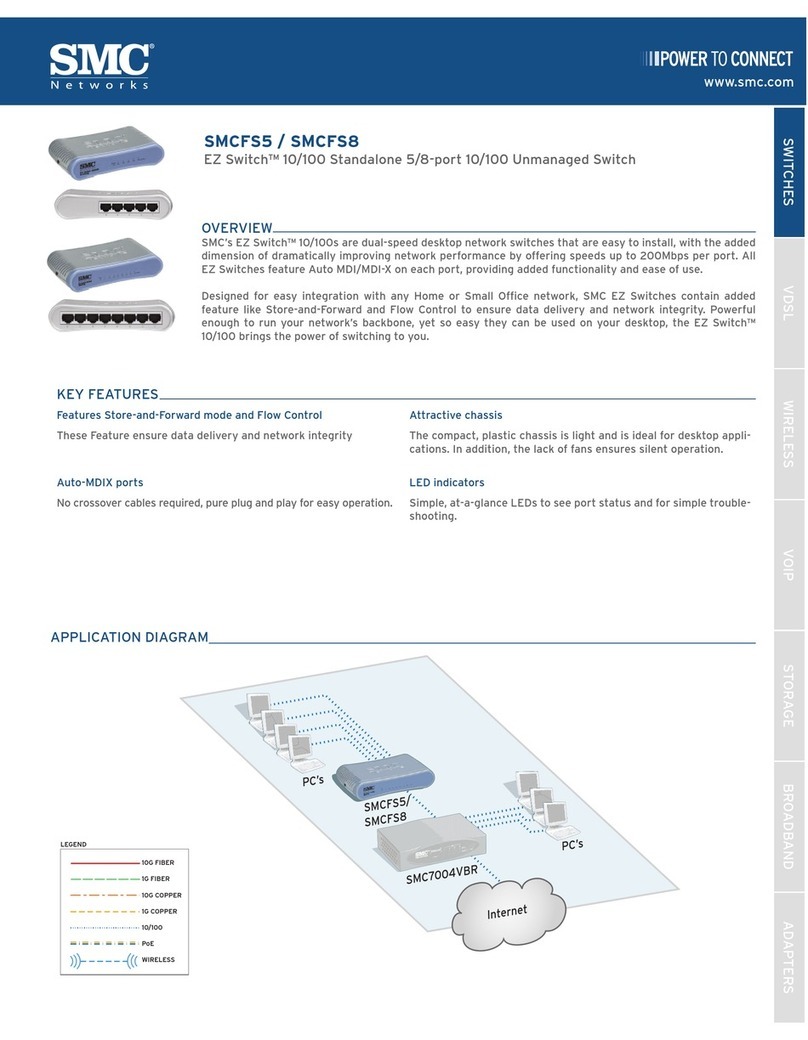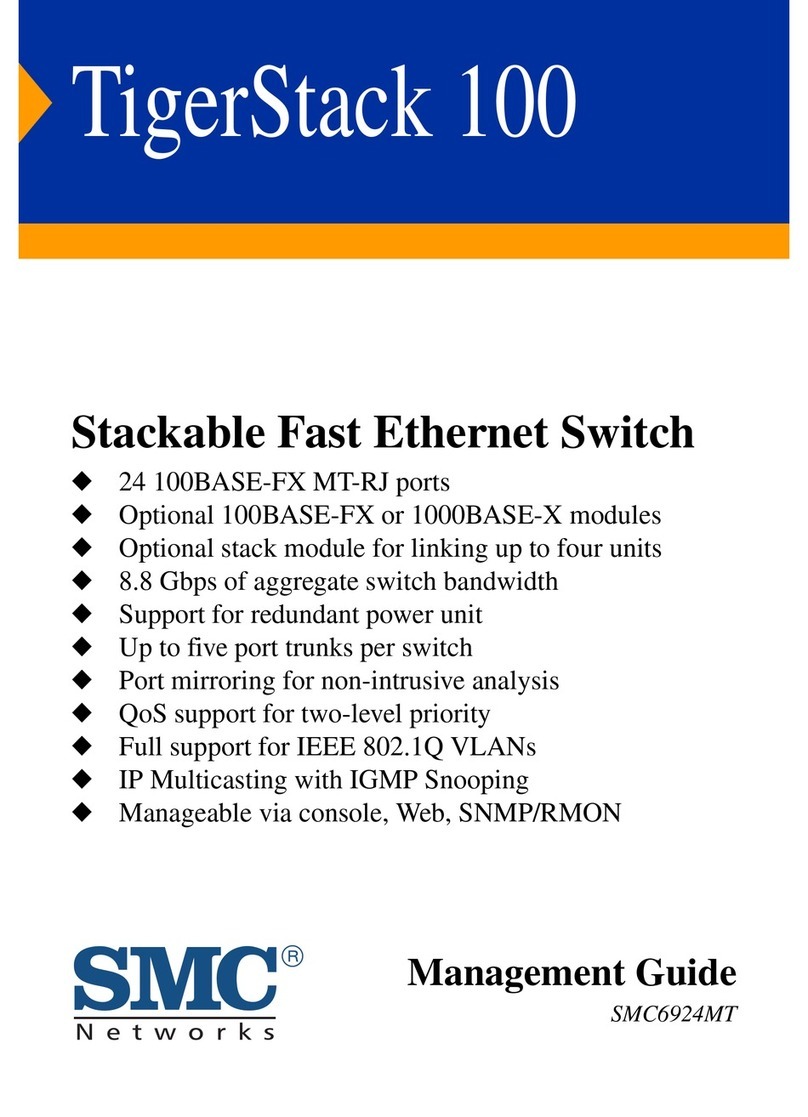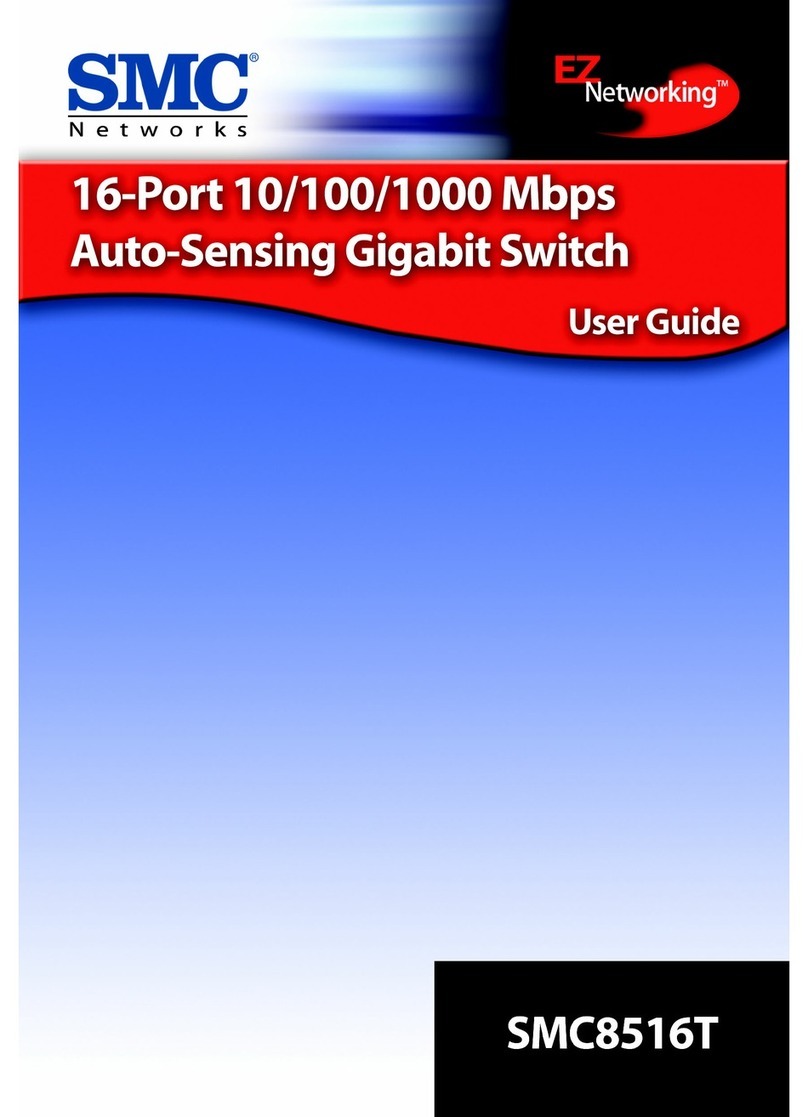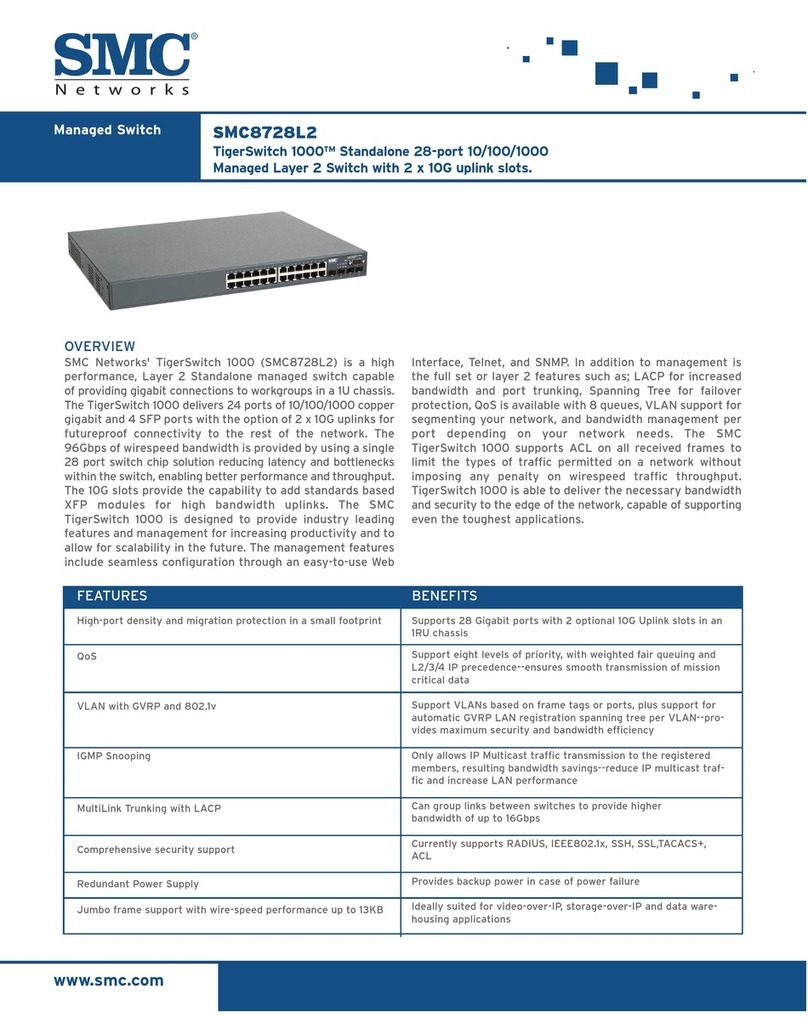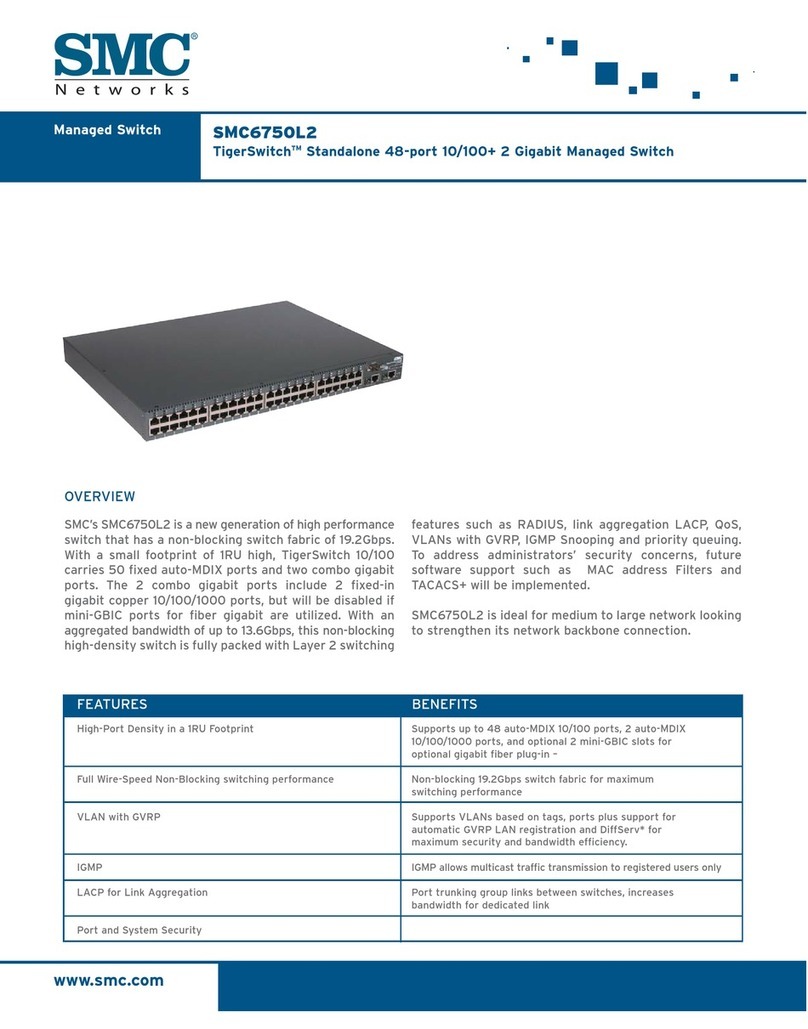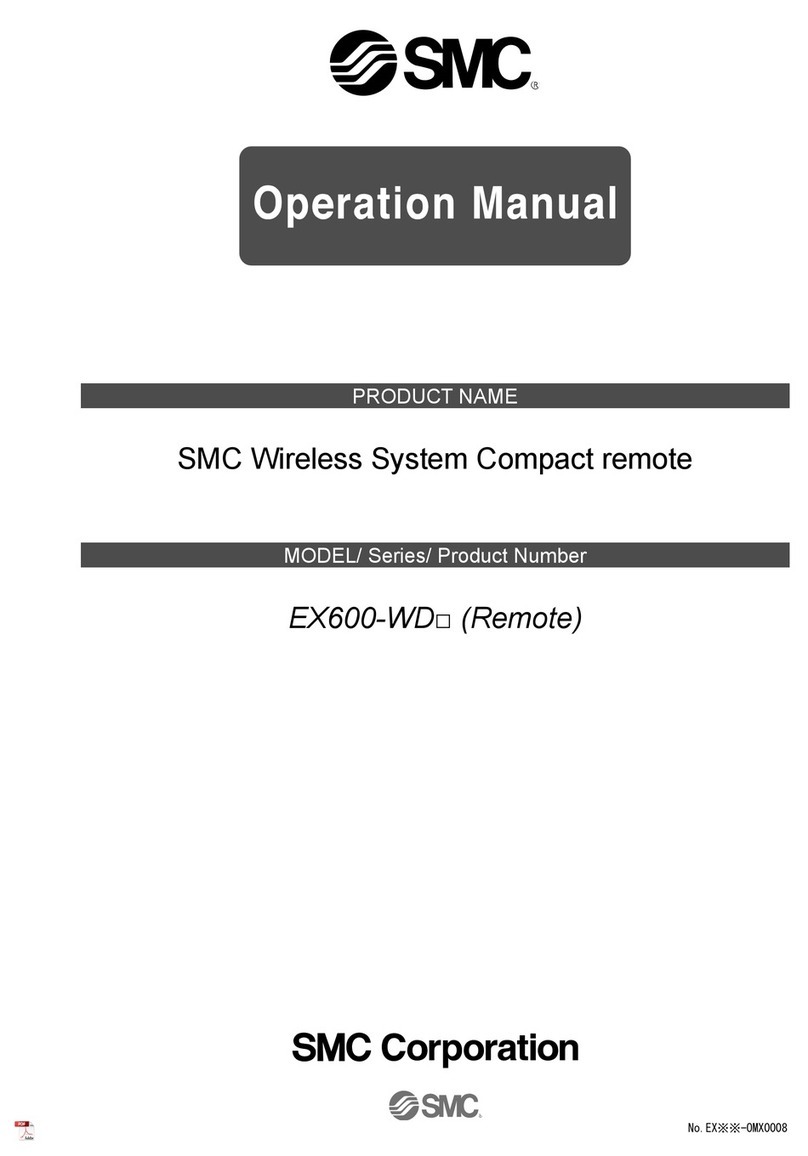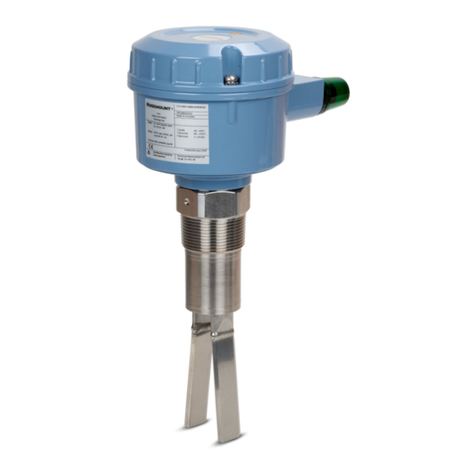Series ZSE2/ISE2
Calibration Procedure
•Set the ON-pressure by the pressure setting
trimmer. Turning clockwise can set the high
pressure/high vacuum pressure.
Pressure
setting trimmer
Indicator light
SET
Set point
Supply pressure
Atmospheric
pressure
0
Unsteady
adsorption
Non adsorption
Steady adsorption
High vacuum
•Set the possible min. pressure for adsorption
confirmation. If setting the pressure lower
than that, switch becomes ON in case that
adsorption is not completely done. If setting
the pressure higher than that, switch does
not become ON even though it may absorb
workpieces.
Hysteresis
•Regarding the pressure setting
Observe the following precautions for setting
the vacuum pressure: Use your fingertips to
gently turn the screwdriver. Do not use a
screwdriver with a large grip or with a tip that
does not fit into the trimmer groove because
this could strip the groove.
Hysteresis is the pressure difference between
the ON and the OFF pressure of the output
signal. The set pressure is the pressure
selected to switch from OFF to ON condition.
Caution
Set point
Atmospheric
pressure 0
High vacuum
Hysteresis
ON
OFF
High
pressure
How to Use Connector
1. Attaching and detaching connectors
•
When assembling the connector to the switch
housing, push the connector straight onto the
pins until the lever locks into the housing slot.
•When removing the connector from the
switch housing, push the lever down to
unlock it from the slot and then withdraw the
connector straight off of the pin.
Lead wire
0.2 to 0.33 mm
2
Max. coating O.D.
ø1.7 mm
0.2 to 0.33 mm
2
Max. coating O.D.
ø1.7 mm
Socket
Connector
DC polarity indicator
Lever
Hook
Lever
DC polarity indicator
Connector
Socket
Lead wire
Hook
Pin
Slot
Housing
Lead wire
Socket
Covering retainer
Core wire crimping area
Hook Covering
Core wire
2. Crimping of lead wires and sockets
Strip 3.2 to 3.7 mm at the end of the lead
wires, insert the ends of core wires evenly into
the sockets, and then crimp with a crimping
tool. When this is done, take care that the
coverings of the lead wires do not enter the
core wire crimping area.
(Crimping tool: model no. DXT170-75-1)
Connector
Lead wire
Socket
Hook
3.
Attaching and detaching lead wires
with sockets
•Attaching
Insert the sockets into the square holes of
the connector (with +, 0, – indication), and
continue to push the sockets all the way in
until they lock by hooking into the seats in
the connector. (When they are pushed in
their hooks open and they are locked
automatically.) Then confirm that they are
locked by pulling lightly on the lead wires.
•Detaching
To detach a socket from a connector, pull out
the lead wire while pressing the socket’s
hook with a stick having a thin tip (about 1
mm). If the socket will be used again, first
spread the hook outward.
•Filter vessel
1. Do not use with thinner, carbon tetrachloride,
chloroform, acetate, aniline, cyclohexane,
trichloroethylene, sulfuric acid, lactic acid
and watermiscible cutting fluid (alkaline).
2. Operate it away from direct sunlight.
Caution
How to Replace Filter Element
Filter vessel
(Filter gasket part no.: ZX1-FG)
Filter element
(ZX1-FE)
Filter gasket
(ZX1-FG)
Gasket groove
If the filter element becomes clogged, leading
to a reduced adsorption force or delayed re-
sponse time, stop the operation and re-place
the element.
(Element part number ZX1-FE) Verify that the
filter gasket is placed properly in the gasket
groove before installing an element.
Filter vessel assembly (Filter
vessel + Filter element)
ZX1-FK-PC
12 to 24
VDC
Brown DC (+)
Black OUT1
Blue DC (−)
Main circuit
+
−
12 to 24
VDC
Brown DC (+)
Black OUT1
Blue DC (−)
+
−
Internal Circuits and Wiring Examples
-15
NPN (1 output)
-55
PNP (2 outputs)
Load
Main circuit
Load
854
